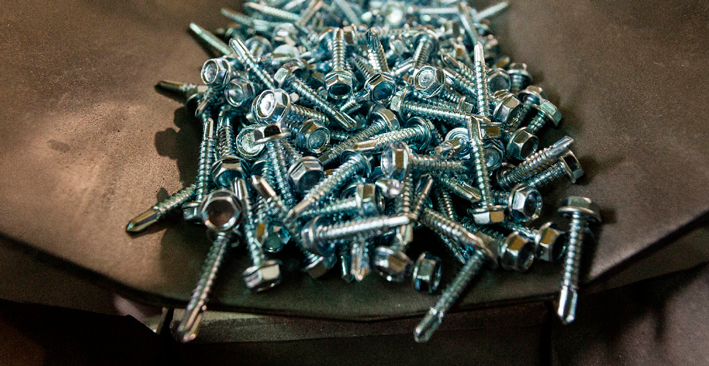In the past, we have covered different topics that relate to self-tapping and self-drilling screws, though we have never specifically explained how to use the latter. Therefore, this time around we decided to focus on self-drilling screws and tell you all the info that you need to start working with them. Naturally, before we dive into the specifics of how to use them, we must clear out one essential question: what are self-drilling screws?
What is a self-drilling screw?
A self-drilling screw is a kind of screw that has a drill-shaped tip, which means that it can be drilled directly into the material and it does not need pilot holes to perforate them. These are the main differences between self-tapping and self-drilling screws.
Though there are different kinds that adapt to specific applications, its design remains essentially the same, which makes it a powerful and convenient option for a wide variety of specialties.
Two of the most sought-after varieties are the self-drilling screw for PVC, which is, of course, created with the intention of facilitating its insertion into PVC.
And the self-drilling screw with wings CBT that works wonders on phenolic wood and prompts the creation of wider holes in it.
Self-drilling screws for metal
If your project requires you to work on metal, whether that implies sole work on the material or fastening it into another type of surface, you should definitely try self-drilling screws for metal. They are perfect for thick metal sheets and will not be hard to install if you know how to screw into metal.
Self-drilling screws for concrete
When working with heavy duty applications that deal with materials such as concrete, block or any type of masonry, opt for concrete screws to have a perfect finish and an easy installation process. Make sure to also know how to screw into concrete to ensure optimal fixing, though their design proves to be highly durable and reliable.
Self-drilling screws for wood
There are self-drilling screw models particularly known for being great to work on wood, some are even specially used to screw wood and metal simultaneously. Their design makes it easier to insert the screw into both materials without risk of malfunction midway.
The general wood-working screw includes a smaller-diameter drilling tip than its overall diameter of the screw; this is to ensure a perfect fixing into the wood.
Self-drilling screws for steel
Self-drilling screws also work perfectly with steel sheets and overall steel materials, providing a nice and quick fasten.
Self-drilling screws for thick steel
Now, if you are working with thick steel sheets or components, you have to make sure you are using self-drilling screws that have an equally thick drill tip. There are drill tips that go up to 16 mm, so which one you choose depends on the density of the surface you will be drilling it onto.
Self-drilling screws for aluminum
Forged aluminum surfaces are not a problem for self-drilling screws either. They can be screwed directly into the material with ease and perform accordingly on the long run.


